Abstract
Study Design
This study reviewed 20 patients who were diagnosed as internal disc disruption (IDD) of the cervical spine. Clinical symptoms were analyzed retrospectively.
Summary of Literature Review
Several studies have demonstrated the symptoms of lumbar spine IDD. No studies have attempted to show the symptoms of cervical spine IDD.
Materials and Methods
A group of patients, who showed chronic neck pain and referred pain to upper limbs after a certain trauma, was materials of this study. All these patients were examined with simple X - ray, flexion-extension views, magnetic resonance image (MRI). When intractable pain was prolonged over 6months in spite of conservative treatment, patient was admitted and performed discogram and computed tomograpy (CT) for a definite diagnosis. There were 20 patients who were diagnosed as IDD from July 1996 to June 2001, and clinical symptoms were analyzed retrospectively.
Results
The various symptoms of the IDD of the cervical spine were chronic neck pain (100%), shoulder pain (95%), headache (90%), interscapular pain (80%), arm pain and paresthesia (75%), insomnia (75%), hand pain and paresthesia (60%), periocular pain (60%), forearm pain and paresthesia (50%), chin pain (50%), subjective weakness of upper extremity (45%), periauricular pain (40%) and tinnitus (30%).
Conclusion
We are led to believe that patients who have chronic neck pain, shoulder pain, interscapluar pain, and other symptoms after a certain trauma of cervical spine are clinically diagnosed as IDD of the cervical spine, although X - ray and MRI are normal. Definite diagnosis of these patients would be made by a discogram, if similar or identical pain is provocated.
Go to : 
REFERENCES
1). Bogduk N, Aprill C. On the nature of neck pain, discography and cervical zygopophysial joint blocks. Pain. 54:213–217. 1993.
2). Bogduk N, Windsor M, Inglis A. The innervation of the cervical intervertebral discs. Spine. 13(11):2–8. 1988.

4). Crock HV. Internal disc disruption. A challenge to disc prolapse fifty years on. Spine. 11(6):650–653. 1986.
5). Kang CH, Chun JH. Disc excision and posterior lumbar interbody fusion for internal disc derangement. J Korean Spine Surg. 8(1):62–67. 2001.

6). Kang CH, Pyun YS, Song KS, Min BW, Kim DG. Diagnosis of internal disc derangement. J Korean Spine Surg. 2(2):209–218. 1995.
7). Kurt P, Michael D, Cooper R, Steven R. Cervical discogenic pain. Prospective correlation of magnetic resonance imaging and discography in asymptomatic subjects and pain suffers. Spine. 21(3):300–312. 1996.
8). Lee CK, Vessa P, Lee JK. Chronic disabling low back pain syndrome caused by internal disc derangements. Spine. 20(3):356–361. 1995.

9). Richard D, William J, Donna D, Stephen H, Ralph F, John J. Discitis after discography. Spine. 13(12):1352–1354. 1988.

10). Robert G, Szpalski M. Whiplash injuries. Current concepts in prevention, diagnosis, and treatment of the cervical whiplash syndrome. 1st ed. Philadelpia: Lippincott-Raven Co;p. 33–60. 1998.
11). Siebenrock KA, Aebi M. Cervical discography in discogenic pain syndrome and its predictive value for cervical fusion. Arch Orthop Trauma Surg. 113:199–203. 1994.

12). Tomas A, Michael E. A correlation of cervical magnetic resonance imaging and discography/computed tomo -graphic discograms. Spine. 19(24):2819–2825. 1994.
13). Thomas S, Randall A. Cervical discogenic syndrome. Results of operative intervention in patients with positive discography. Spine. 12(4):313–316. 1987.
Go to : 
Figures and Tables%
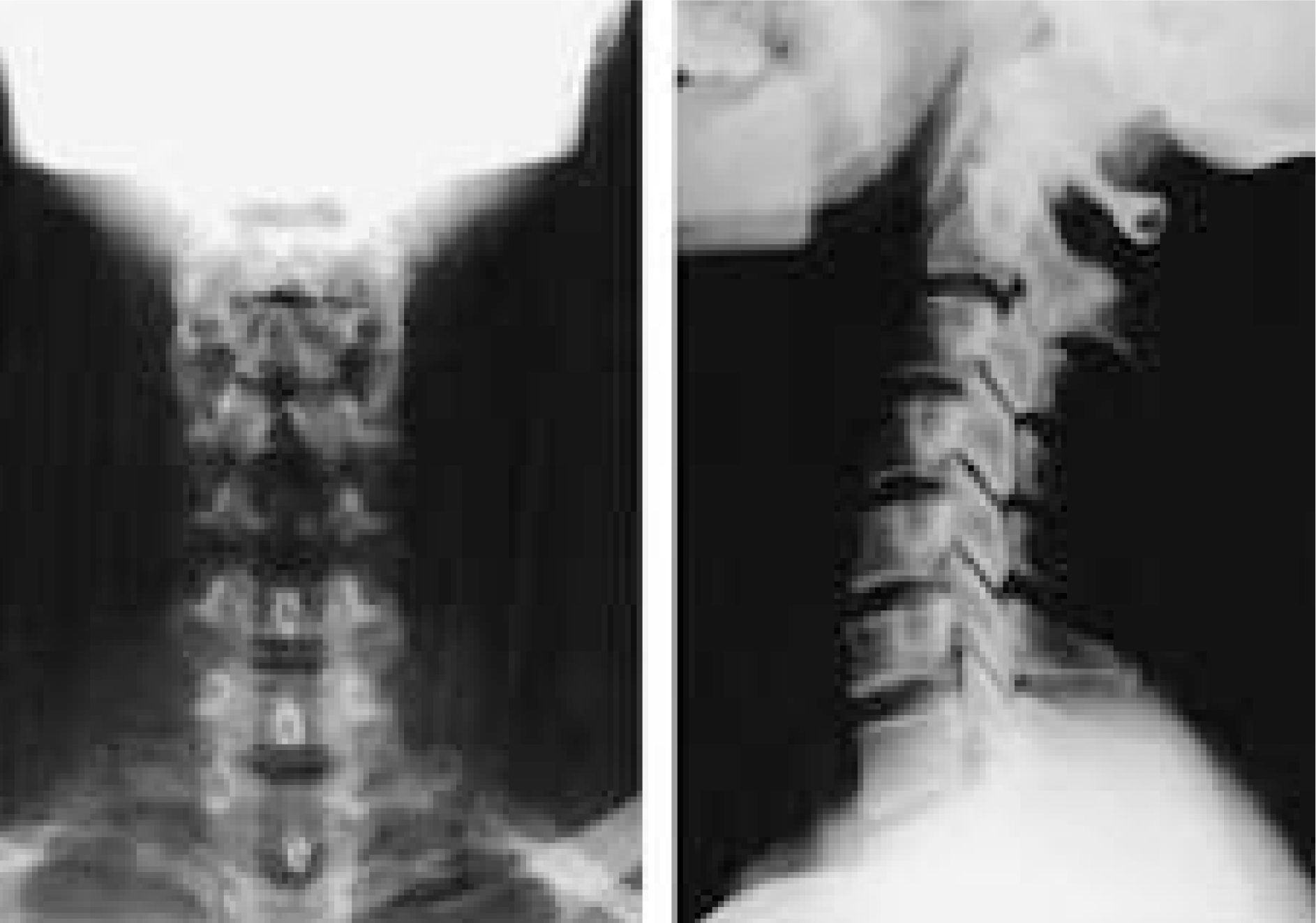 | Fig. 1.Anteroposterior and lateral roentgenograms of patient without cervical spine fracture and dislocation. |
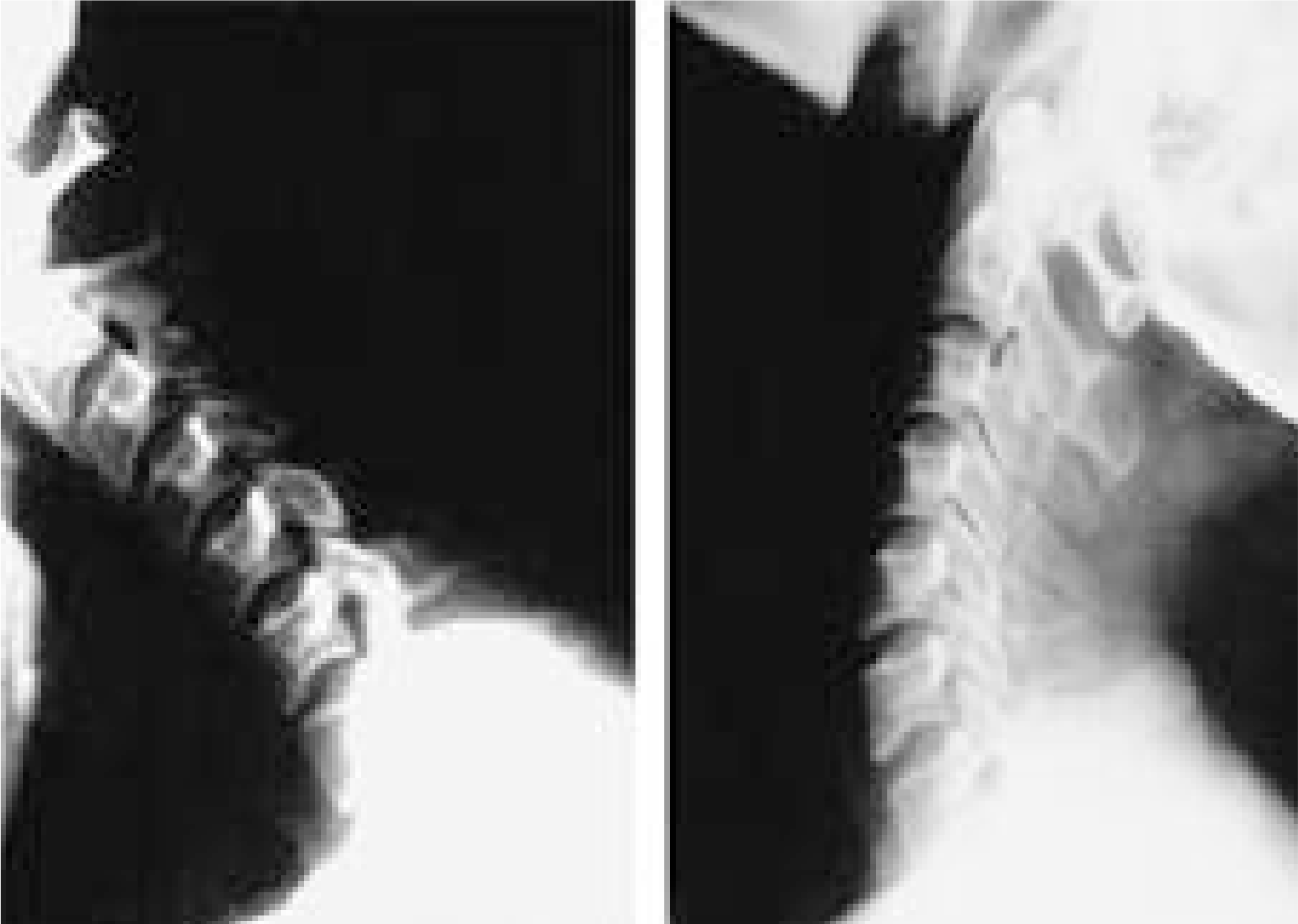 | Fig. 2.Lateral flexion-extension roentogenograms of patient without cervical spine instability. |
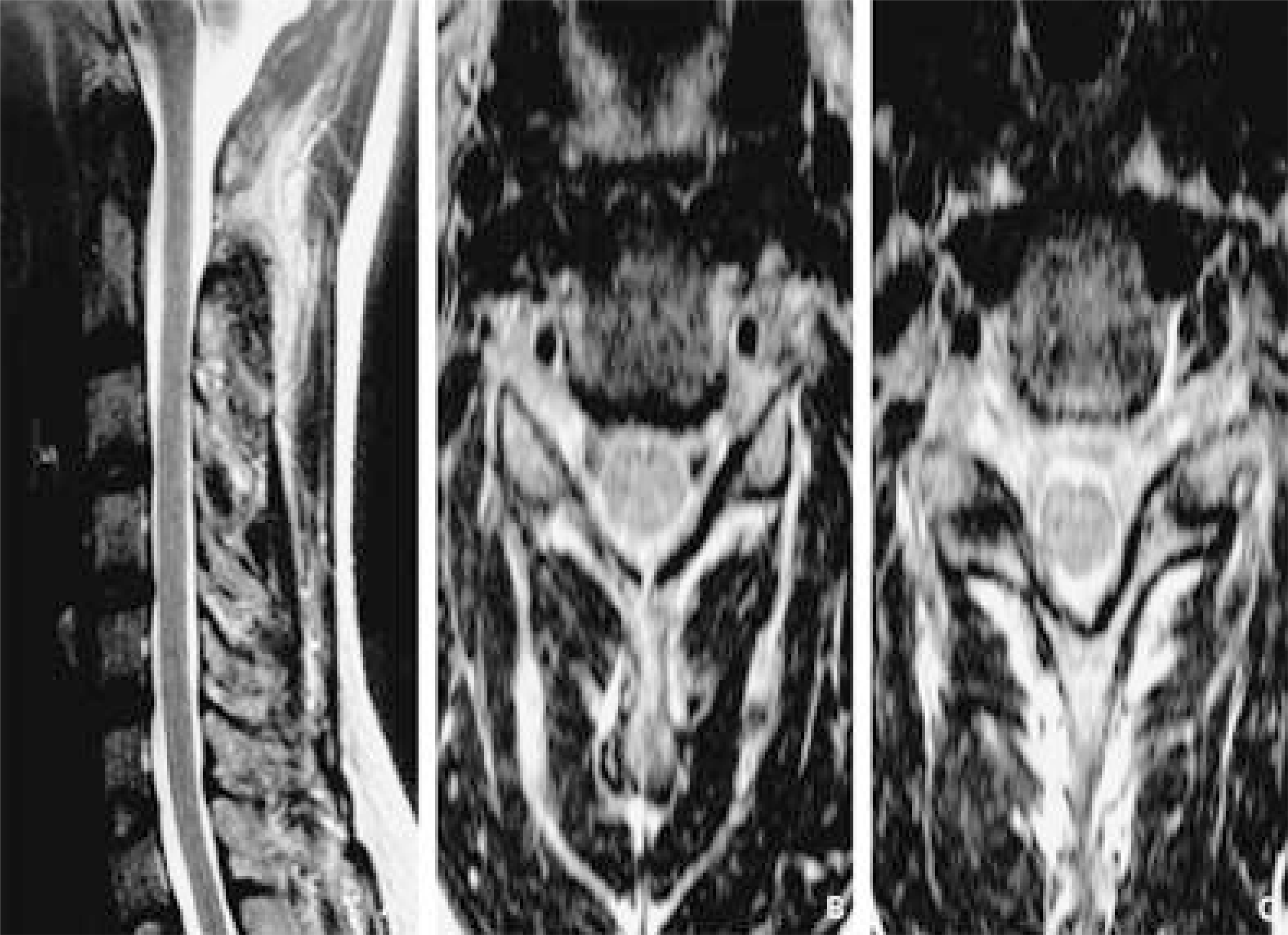 | Fig. 3.The MRI of the cervical spine shows normal findings without herniated disc and spinal cord compression. A. T2 weighted sagittal MRI. B. T2 weighted axial MRI at C4-5. C. T2 weighted axial MRI at C5-6. |
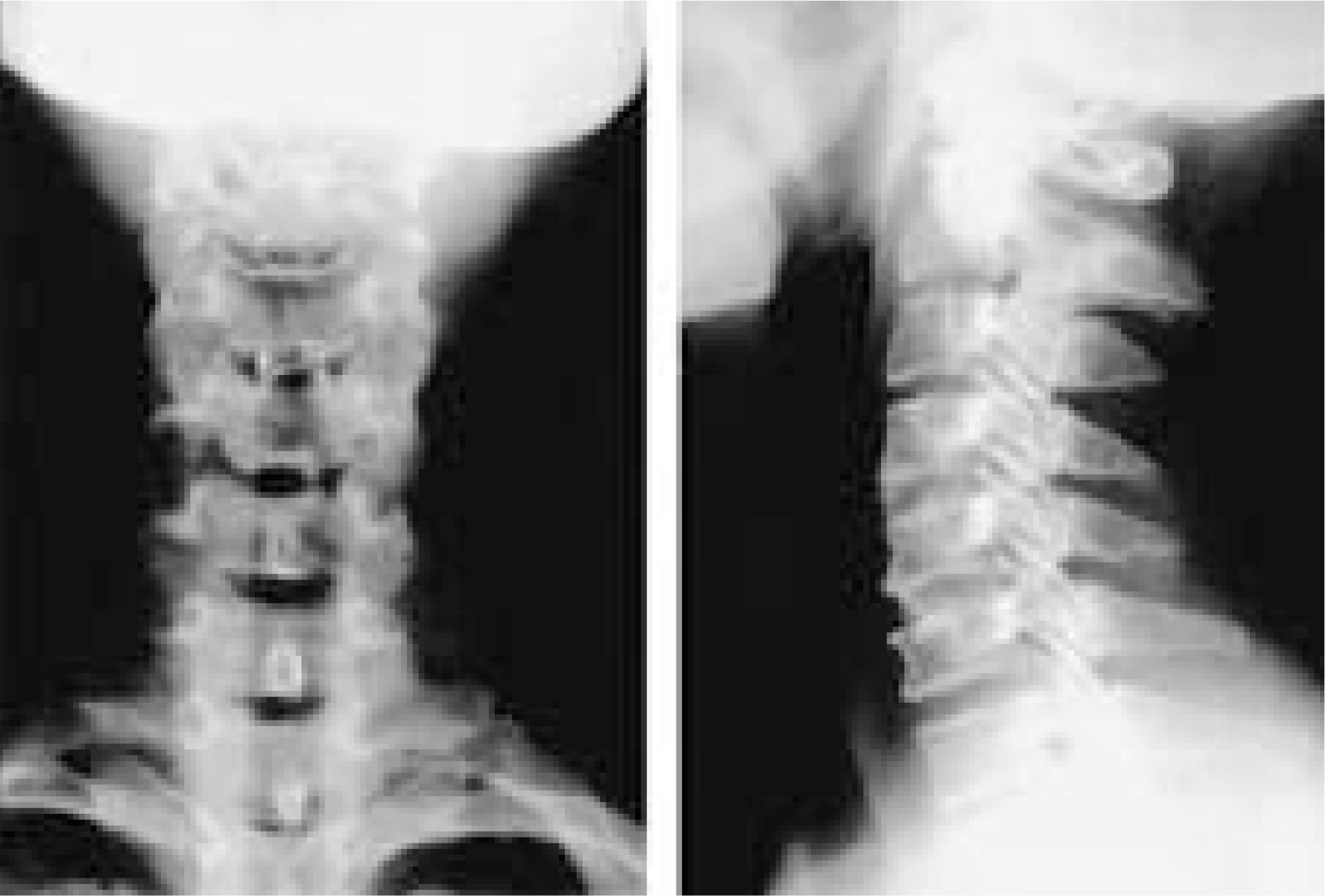 | Fig. 6.Anteroposterior and lateral roentgenograms of C4-5 and C5-6 fusion with autogenous bone graft. |
Table 1.
Clinical symptoms of cervical IDD∗.




 PDF
PDF ePub
ePub Citation
Citation Print
Print


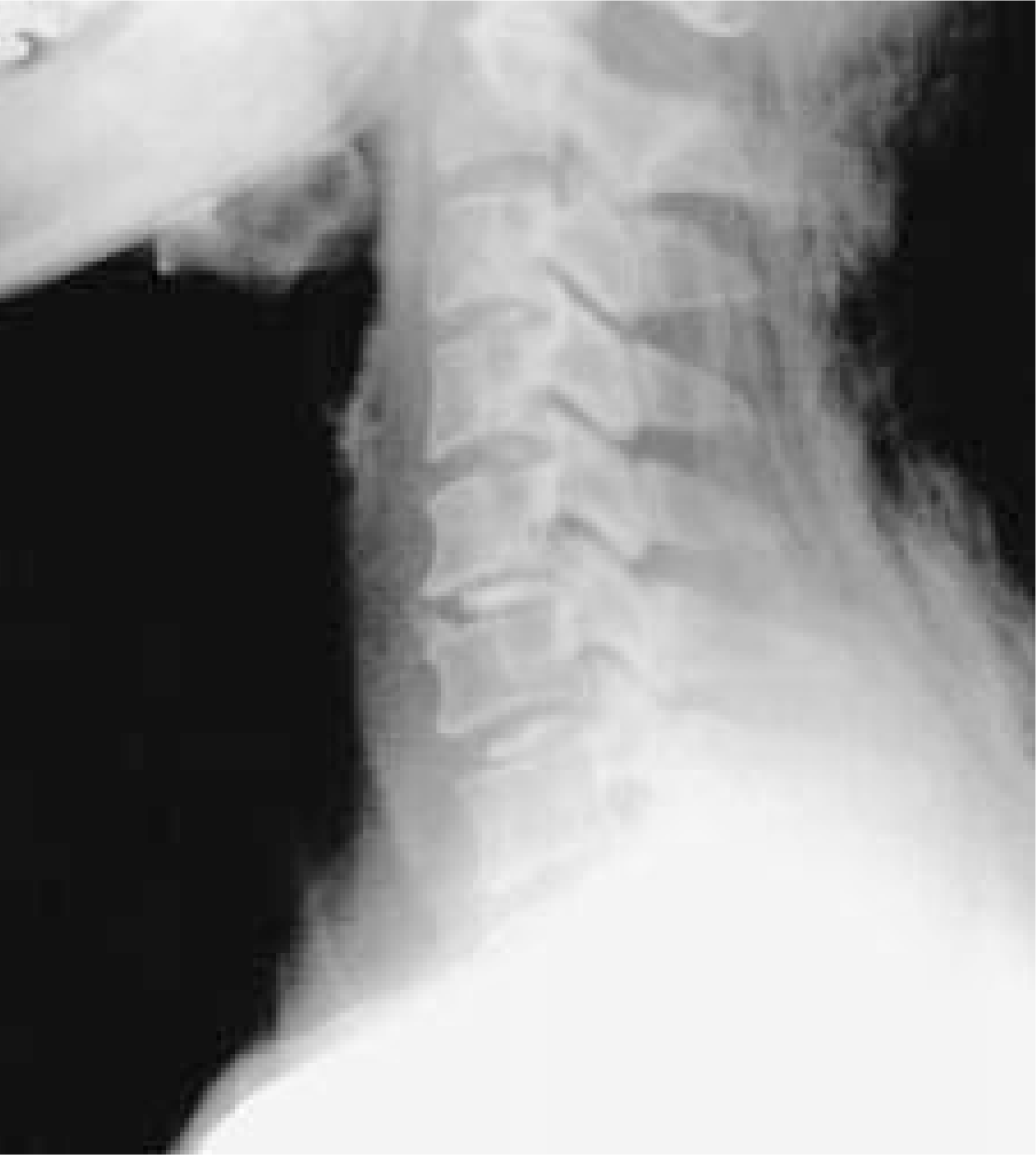
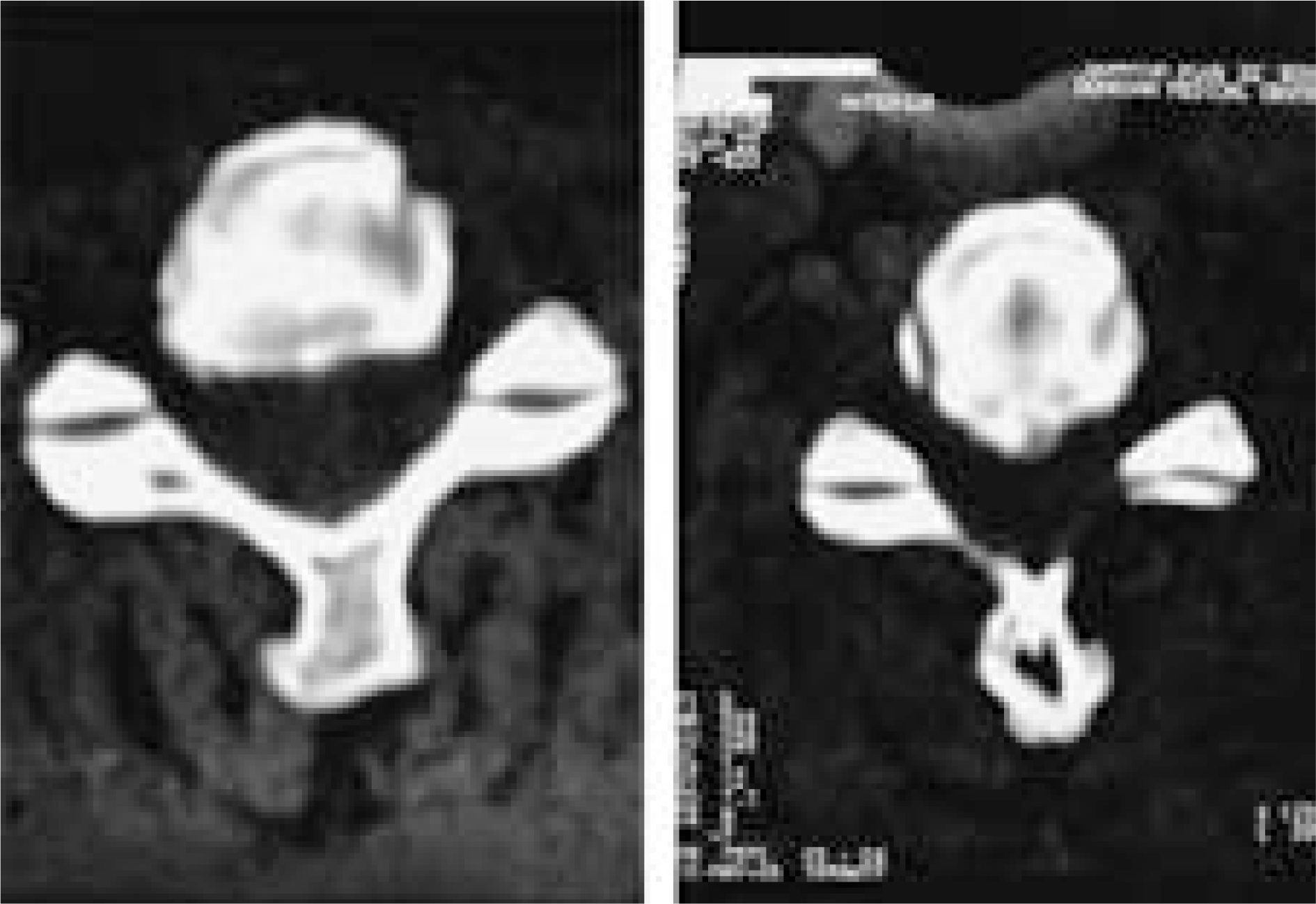
 XML Download
XML Download